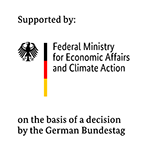The geopolitical events of the last year, coupled with the rise in energy costs and reduced fertilizer production, have highlighted the importance of the fertilizer sector for global food security. In the face of the sector’s challenges, the need for a climate-friendly transformation of the sector is now more urgent than ever. According to the latest IPCC report, global warming will likely reach 1.5°C between 2030 and 2052 if it continues to increase at the current rate, causing irreversible effects on ecosystems and human civilization. At the same time, The global production of fertilisers is accountable for approximately 1.4% of annual CO2 emissions.
The primary source material used to produce nitrogen-based fertilisers is nitric acid, which releases a significant amount of N2O during manufacturing. N2O has a Greenhouse Warming Potential 273 times higher than CO2, remains in the atmosphere for more than 200 years and is one of the most critical ozone-depleting substances. NACAG is continuously working towards climate-friendlier nitric acid production worldwide and looks back on some important developments in the past year.
More governments committing to permanent N2O mitigation.
Zambia became the 15th country to sign the NACAG Declaration, officially declaring its support for the initiative’s goal of reducing nitrous oxide emissions from nitric acid production. Prior to this, the NACAG Secretariat visited Zambia and conducted a technical feasibility study at the nitric acid producer Nitrogen Chemicals of Zambia, elaborating on the best possible technological solutions for the plant to mitigate N2O emissions.
In February last year, Colombia signed the Statement of Undertaking (SoU), becoming the 10th country committing to ensuring effective and permanent mitigation of nitrous oxide emissions from nitric acid production. With this commitment from the government, nitric acid production facilities in the country are eligible to apply for financial support from the NACAG Secretariat. During the due diligence procedure, representatives from the NACAG Secretariat visited nitric acid producer Monómeros to strengthen the cooperation with the Colombian partner plant.
More plants to be equipped with the abatement technology
In the course of last year, two plants in Mexico, „Quimica Píma“ and „Solucionas Químicas,“ and the sole nitric acid producer in Georgia, „Rustavi Azot,“ signed a Grant Agreement with NACAG. These nitric acid producers will receive full technical and financial support to procure and install abatement and monitoring equipment. The mitigation potential in Mexico of 700,000 and in Georgia of 90,000 tons of CO2 equivalent per year together equals the emissions of approximately 380,000 flights from Mexico to Georgia.
Along with three other nitric acid plants in Jordan, Tunisia and Zimbabwe, these plants are currently preparing or already in the process of tendering N2O abatement and monitoring technology. Following the tender process, the first equipment will be installed in nitric acid plants of NACAG partner countries.
More decarbonisation potential ahead with green fertilisers
While more and more plants and governments are benefiting each year from NACAG’s offer, there is still a long way to go before completely carbon-neutral fertiliser production becomes a reality. However, climate-friendly fertiliser production is highly desirable not only because of its benefits for the climate but also because it helps to build a more robust and resilient global food system.
The reliance on fossil fuels for fertiliser production and the concentration of fossil reserves leave fertiliser-producing countries vulnerable to market disruptions, as seen in the current geopolitical situation. This dependence on fossil energy sources is concerning since fertilisers are responsible for nearly half of the world’s food production, making them a crucial factor in ensuring global food stability.
As the world sees a growing demand for green hydrogen and green ammonia, decarbonising the energy-intensive manufacturing process of fertilisers by using local renewable energy sources poses great potential for the whole fertiliser industry. Green fertilisers, with a carbon footprint 80-90% lower than traditional synthetic fertilisers, would not only help to decarbonise the food chain but also decouple the process from volatile fossil prices, advancing global food security.
NACAG’s vision is that all nitric acid producers worldwide are permanently equipped with abatement technology. However, in the long term, fertilisers will have to be produced entirely emission-free to achieve net-zero targets and combat the most dangerous common threat: the climate crisis.



